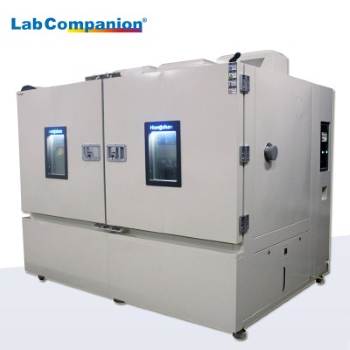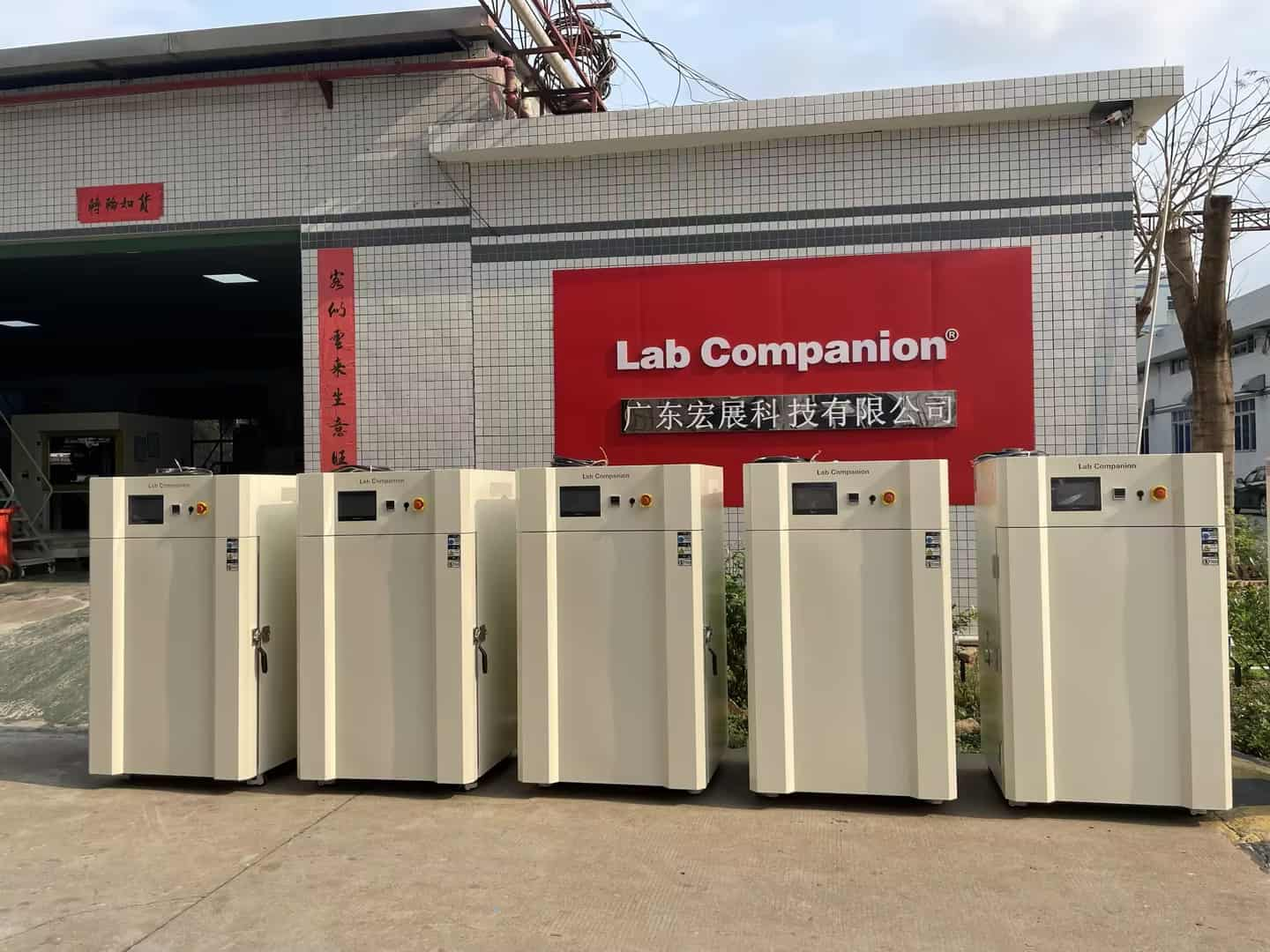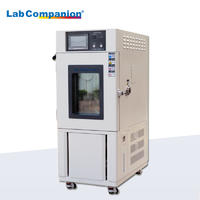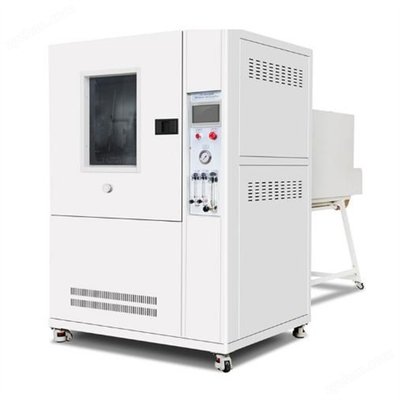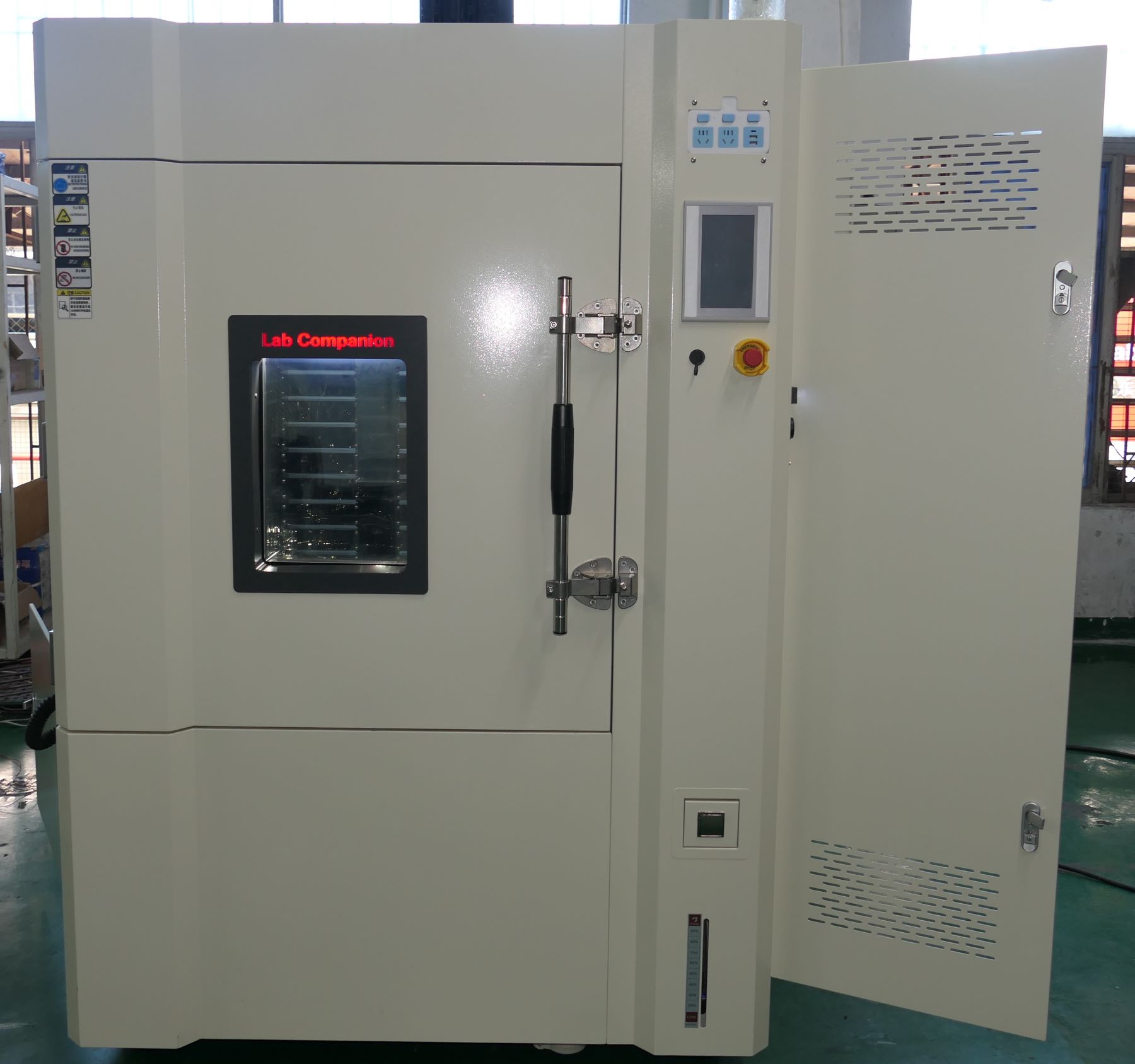การทดสอบความน่าเชื่อถือด้านสิ่งแวดล้อม: คู่มือที่ครอบคลุม (1)
May 27, 2025
การแนะนำการทดสอบความน่าเชื่อถือเป็นกระบวนการที่สำคัญในการพัฒนาและการผลิตอุปกรณ์ โดยต้องแน่ใจว่าอุปกรณ์เป็นไปตามมาตรฐานประสิทธิภาพที่กำหนดภายใต้เงื่อนไขการทำงานที่คาดหวัง การทดสอบความน่าเชื่อถือสามารถจำแนกประเภทได้ขึ้นอยู่กับสภาพแวดล้อมการทดสอบ การทดลองในห้องปฏิบัติการ และ การทดสอบภาคสนาม การทดสอบความน่าเชื่อถือของห้องปฏิบัติการดำเนินการภายใต้เงื่อนไขที่ได้รับการควบคุม ซึ่งอาจจำลองสถานการณ์ในโลกแห่งความเป็นจริงหรือไม่ก็ได้ ในขณะที่การทดสอบความน่าเชื่อถือในภาคสนามดำเนินการในสภาพแวดล้อมการปฏิบัติงานจริง การทดสอบความน่าเชื่อถือสามารถแบ่งออกได้อีกตามวัตถุประสงค์และขั้นตอนการพัฒนาผลิตภัณฑ์ ดังนี้การทดสอบวิศวกรรมความน่าเชื่อถือ (รวมถึงการคัดกรองความเครียดด้านสิ่งแวดล้อม (ESS) และการทดสอบการเติบโตของความน่าเชื่อถือ) – มุ่งเน้นไปที่การระบุและขจัดข้อบกพร่อง ซึ่งโดยทั่วไปดำเนินการในระหว่างขั้นตอนการพัฒนาการทดสอบทางสถิติความน่าเชื่อถือ (รวมถึงการทดสอบการตรวจสอบความน่าเชื่อถือและการทดสอบการวัดความน่าเชื่อถือ) – ใช้เพื่อตรวจสอบว่าผลิตภัณฑ์เป็นไปตามข้อกำหนดด้านความน่าเชื่อถือหรือไม่ หรือเพื่อประมาณค่าเมตริกความน่าเชื่อถือ ซึ่งโดยปกติจะดำเนินการระหว่างการพัฒนาและการผลิต บทความนี้มุ่งเน้นไปที่ การทดสอบทางสถิติความน่าเชื่อถือครอบคลุมถึงขั้นตอนการทดสอบ วิธีการ การตรวจติดตามประสิทธิภาพ การจัดการข้อผิดพลาด และการคำนวณเมตริกความน่าเชื่อถือ1. แผนการทดสอบทั่วไปและข้อกำหนด(1) การเตรียมตัวก่อนการทดสอบก่อนที่จะทำการทดสอบความน่าเชื่อถือ แผนการทดสอบความน่าเชื่อถือ จะต้องได้รับการพัฒนาโดยใช้ประโยชน์จากข้อมูลการทดสอบที่มีอยู่เพื่อหลีกเลี่ยงความซ้ำซ้อน ขั้นตอนการเตรียมการที่สำคัญ ได้แก่:ความพร้อมของอุปกรณ์: ตรวจสอบให้แน่ใจว่าอุปกรณ์ภายใต้การทดสอบ (DUT) อุปกรณ์ทดสอบ และเครื่องมือเสริมได้รับการกำหนดค่าและปรับเทียบอย่างถูกต้องการคัดกรองความเครียดด้านสิ่งแวดล้อม (ESS): DUT ควรผ่าน ESS เพื่อขจัดความล้มเหลวในช่วงต้นอายุการใช้งานการตรวจสอบการทดสอบ: การตรวจสอบก่อนการทดสอบควรยืนยันว่าเป็นไปตามเงื่อนไขทั้งหมดสำหรับการทดสอบที่ถูกต้อง (2) เงื่อนไขการทดสอบสิ่งแวดล้อมที่ครอบคลุมสภาพแวดล้อมการทดสอบควรจำลองความเครียดในการทำงานในโลกแห่งความเป็นจริง รวมถึง:การรวมความเครียด: การจำลองลำดับความเครียดหลักที่พบในการใช้งานจริงเงื่อนไขการปฏิบัติงาน: DUT ควรปฏิบัติงานภายใต้ภาระงานและสภาพแวดล้อมทั่วไปการปฏิบัติตามมาตรฐาน: เงื่อนไขการทดสอบควรสอดคล้องกับมาตรฐานทางเทคนิคหรือข้อกำหนดในสัญญา (3) แผนการทดสอบทางสถิติและการคัดเลือกกำหนดแผนการทดสอบหลักสองแผน:แผนการทดสอบแบบตัดทอนเวลาที่กำหนด: เหมาะสำหรับเมื่อจำเป็นต้องมีระยะเวลาการทดสอบและการประมาณต้นทุนที่แม่นยำแผนการทดสอบแบบตัดทอนตามลำดับ: ควรเลือกเมื่อความเสี่ยงของผู้ผลิตและผู้บริโภค (10%–20%) เป็นที่ยอมรับได้ โดยเฉพาะอย่างยิ่งสำหรับอุปกรณ์ที่มีความน่าเชื่อถือสูงหรือต่ำหรือเมื่อขนาดตัวอย่างมีขนาดเล็ก การเลือกตัวอย่าง:DUT จะต้องได้รับการเลือกแบบสุ่มจากชุดที่ผลิตภายใต้การออกแบบและเงื่อนไขการผลิตที่เหมือนกันขอแนะนำให้มีตัวอย่างขั้นต่ำ 2 ตัวอย่าง แต่อาจอนุญาตให้มีตัวอย่างเพียงตัวอย่างเดียวได้หากมีหน่วยน้อยกว่า 3 หน่วย2. ประเภทของการทดสอบทางสถิติความน่าเชื่อถือ(1) การทดสอบคุณสมบัติความน่าเชื่อถือวัตถุประสงค์: เพื่อตรวจสอบว่าการออกแบบเป็นไปตามข้อกำหนดความน่าเชื่อถือที่ระบุหรือไม่ประเด็นสำคัญ:ดำเนินการภายใต้เงื่อนไขการปฏิบัติงานจำลองต้องใช้ตัวอย่างตัวแทนของการกำหนดค่าทางเทคนิคที่ได้รับการอนุมัติรวมถึงการกำหนดเงื่อนไขการทดสอบ การจำแนกความผิดพลาด และเกณฑ์ผ่าน/ไม่ผ่าน (2) การทดสอบการยอมรับความน่าเชื่อถือวัตถุประสงค์: เพื่อให้มั่นใจว่าอุปกรณ์ที่ผลิตจำนวนมากเป็นไปตามมาตรฐานความน่าเชื่อถือก่อนส่งมอบประเด็นสำคัญ:ดำเนินการกับตัวอย่างที่เลือกแบบสุ่มจากชุดการผลิตใช้เงื่อนไขสภาพแวดล้อมแบบเดียวกันกับการทดสอบคุณสมบัติรวมถึงเกณฑ์การยอมรับ/ปฏิเสธชุดตามผลการทดสอบ (3) การทดสอบการวัดความน่าเชื่อถือวัตถุประสงค์: เพื่อประเมินค่าความน่าเชื่อถือ เช่น อัตราความล้มเหลว (λ), เวลาเฉลี่ยระหว่างความล้มเหลว (MTBF), และ เวลาเฉลี่ยก่อนที่จะเกิดความล้มเหลว (MTTF)ประเด็นสำคัญ:ไม่มีเวลาตัดทอนที่กำหนดไว้ล่วงหน้า สามารถประมาณความน่าเชื่อถือได้ในทุกขั้นตอนใช้วิธีทางสถิติในการคำนวณค่าประมาณจุดและช่วงความเชื่อมั่น (4) การรับรองความน่าเชื่อถือtวัตถุประสงค์: ทางเลือกอื่นในการทดสอบการยอมรับสำหรับผลิตภัณฑ์ที่มีความน่าเชื่อถือหรือมีความสมบูรณ์แบบสูงซึ่งการทดสอบแบบเดิมไม่สามารถทำได้ในทางปฏิบัติประเด็นสำคัญ:ดำเนินการหลัง ESSเน้นที่ระยะเวลาการทำงานที่ปราศจากข้อผิดพลาด (t)ต้องมีข้อตกลงระหว่างผู้ผลิตและลูกค้าบทสรุปการทดสอบความน่าเชื่อถือด้านสิ่งแวดล้อมถือเป็นสิ่งสำคัญในการรับรองความทนทานและประสิทธิภาพของผลิตภัณฑ์ โดยการนำแผนการทดสอบที่มีโครงสร้างมาใช้ ไม่ว่าจะเป็นการทดสอบคุณสมบัติ การยอมรับ การวัด หรือการรับรอง ผู้ผลิตสามารถตรวจสอบมาตรวัดความน่าเชื่อถือ เพิ่มประสิทธิภาพการออกแบบ และส่งมอบผลิตภัณฑ์ที่มีคุณภาพสูงการทดสอบความน่าเชื่อถือของสิ่งแวดล้อมสามารถทำได้โดยใช้ห้องทดสอบสิ่งแวดล้อม ซึ่งจำลองสภาวะจริงเพื่อประเมินประสิทธิภาพของผลิตภัณฑ์ ช่วยลดเวลาในการทดสอบและเพิ่มประสิทธิภาพได้อย่างมากLab-Companion มีความเชี่ยวชาญด้านการผลิตอุปกรณ์ทดสอบสิ่งแวดล้อมมากว่า 20 ปี ด้วยประสบการณ์จริงอันยาวนานและการสนับสนุนการติดตั้งในสถานที่ เราช่วยให้ลูกค้าเอาชนะความท้าทายในโลกแห่งความเป็นจริงในการทดสอบการใช้งาน
อ่านเพิ่มเติม


